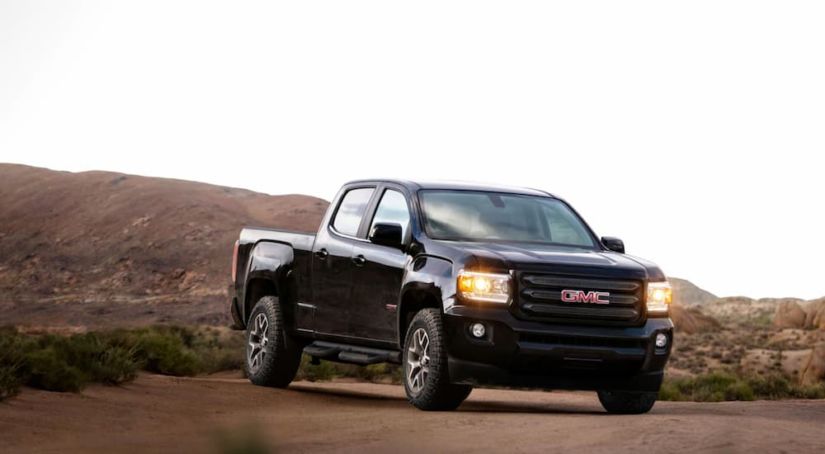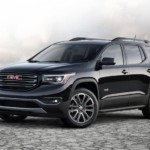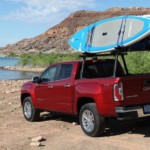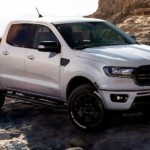At some point, you would expect the mid-sized truck market to separate itself a little bit. You have a handful of trucks, most of which don’t have anything that makes them outstanding. It is a class full of “meh”, for the most part. If you were to take any two of these pickup trucks and do a side by side comparison, none will rise above the next. There isn’t a single one that is significantly better in any area than another. For example, let’s take a quick look at the 2019 GMC Canyon vs 2019 Ford Ranger.
Both of these are perfectly fine, capable mid-sized pickup trucks. They are in no way bad vehicles, they just haven’t done anything extraordinary to break away from the rest of the pack. We will give the 2019 Ford Ranger a bit of a break, as it is back from an eight-year hiatus, so maybe it has some rust to shake off. But the GMC Canyon has been in continuous production since the early 2000s, so it should be held to a higher standard.
Engines
We will start with the engines because that is the most important part of any vehicle. Without the engine, all you have is a very pretty shell. The 2019 Ford Ranger offers one engine, but it is a fairly efficient one. The Ranger’s engine is a 2.3 liter 4-cylinder that gets up to 270 horsepower and 30 lb-ft of torque. When properly equipped, the 2019 Ford Ranger and this engine can tow up to 7500 pounds. It also has the automatic start/stop technology, which will kill the engine when idling, such as at a stoplight. This feature helps with fuel efficiency and it’s carbon output.
The 2019 GMC Canyon, on the other hand, has three available engines. The base is a 2.5 liter 4-cylinder with 200 horsepower and 191 lb-ft of torque. Those numbers are just a fraction of what the only engine in the 2019 Ford Ranger can get. The biggest of the Canyon’s engines is a 3.6 liter V6 with 308 horsepower and 275 lb-ft of torque. That is a much more comparable engine, gaining in horses but lacking in torque. The other option is a 2.8 liter 4-cylinder turbo diesel engine with 186 horsepower and an absurd 369 lb-ft of torque. The towing capacity on the 2019 GMC Canyon is slightly better at 7600 pounds, achievable on the turbo diesel engine.
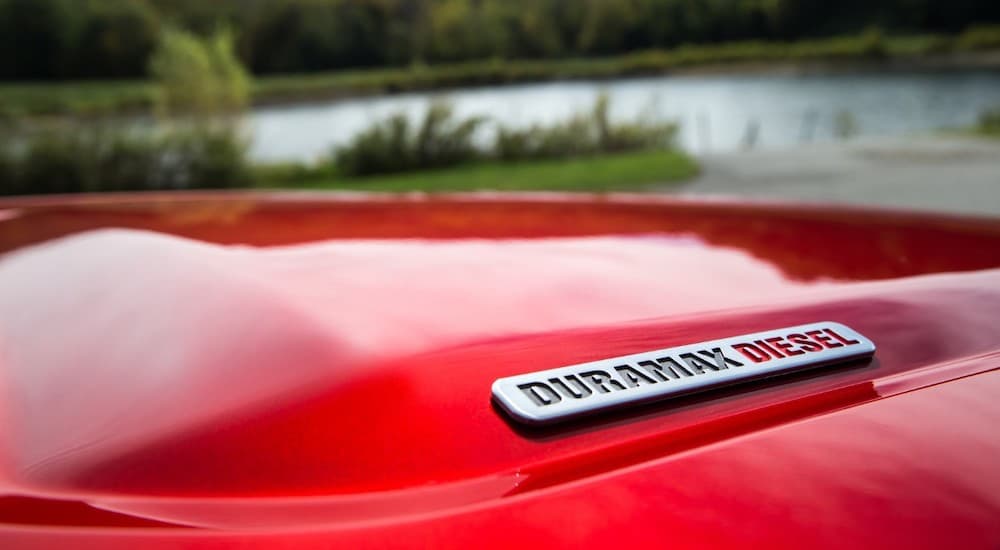
These types of trucks are not as commonly used as work trucks as their bigger brethren are, so the more powerful engine might not be the ultimate selling point. If you are looking for some variety and options, the 2019 GMC Canyon is your better bet. If you are not looking to upgrade the engine and are fine with the base option, the 2019 Ford Ranger is the far superior choice.
Cargo
The El Camino notwithstanding, the thing that makes a truck a truck is the cargo bed. It has served countless people around the world in all kinds of capacities, from hauling work materials to serving as amateur movers to any other chore you can fit back there. And since the truck bed is arguably the most versatile aspect of any civilian vehicle on the planet, there is no end to what it can be used for. When it comes to these two specimens, they offer different dimensions and capabilities.
Since truck beds can be configured differently depending on the size of the cab, we will keep it as simple as possible. There is no need to delve into all that different math. You don’t want to read it any more than we want to write it. For all of the configurations that are comparable to each other between the 2019 Ford Ranger and the 2019 GMC Canyon, suffice it to say that the Canyon offers a longer bed by a significant margin. However, the Ranger’s bed is quite a bit wider.
While what you put in the truck bed may dictate what size bed you prefer, most everyone can agree that the ability to haul more is a significant advantage. That distinction belongs to the 2019 Ford Ranger, with its ability to haul a maximum payload of 1,860 pounds to the Canyon’s 1,605 pounds. When you are looking at heavy-duty trucks that can go north of 6,000 pounds, then 255 pounds is not that big of a discrepancy. But when you are on a scale of less than a ton, that 12% or so is quite glaring.
t would seem, then, that this round would go to the 2019 Ford Ranger, but there is one key aspect to the battle of the beds that is worth remembering. If you are using one of these trucks as a work vehicle, you will likely eventually put building materials in the bed at some point. These materials could be anything from lumber to rebar to PVC pipe or something that can get quite long. These materials could create a driving hazard if they have to poke them too far out of the bed or over the tailgate. With its longer cargo bed, the 2019 GMC Canyon is worth a look if you will be using your truck bed for things of that nature.
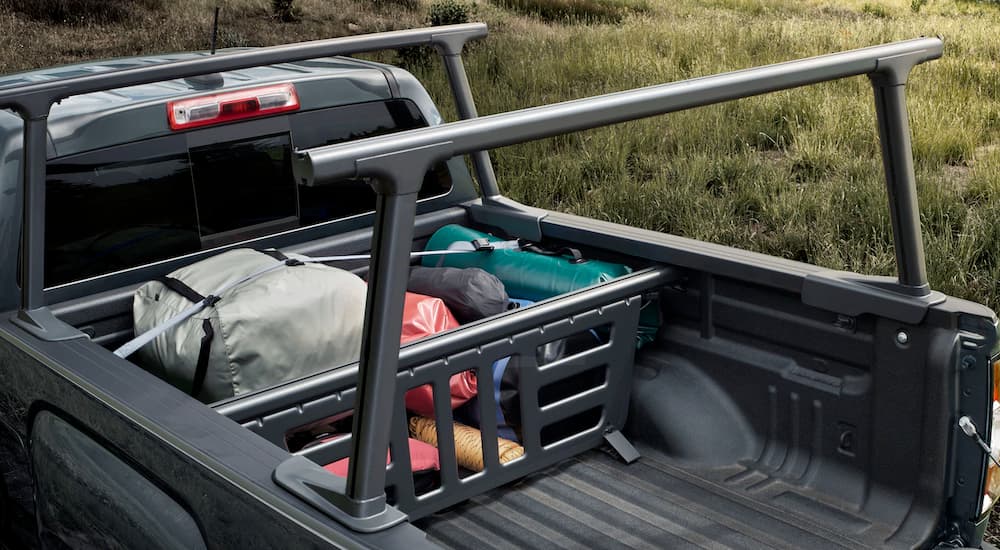
Safety Features
In modern vehicles, safety features, as well as infotainment and convenience, are becoming increasingly valuable as selling points. After all, if they exist, why not have them on your vehicle? Pickup trucks tend to have fewer of these safety features on the whole than more family-friendly vehicles like cars or SUVs, but they still have quite a few, many of which are specific to towing an hauling.
While both of these vehicles have the standard features you will find across the entire automotive market, there a couple of outliers that the other doesn’t have. For example, the 2019 GMC Canyon has a back seat reminder. Using sensors and door memory, the Canyon will sound an alarm if it detects that you exited the truck without getting what is in the back seat out. This was originally invented to remind parents to not forget their children, but it could also be useful for something like groceries. The 2019 Ford Ranger does not have this reminder.
What the 2019 Ford Ranger does have that is absent on the Canyon is rear cross path alert, which alerts the driver of any obstruction in the way while in reverse, and driver alert, which will sound an alarm if the Ranger detects lane drift. Both of these are optional features on the Ranger. One important standard feature, though, is automatic braking. This feature applies the brakes for you if it detects an imminent collision. It may be only a fraction of a second faster than your own reflexes, but that fraction of a second could potentially save a life. Not only is this a standard feature on the Ranger, but the Canyon doesn’t even offer it as an option.
Both of these vehicles have something to offer the right driver, but so does every other mid-sized truck. This class isn’t like the HD class, which became a three-horse race long ago. Every automaker on the planet has a horse in this race, and they are all just running along, with no one in any apparent hurry to take the lead.
